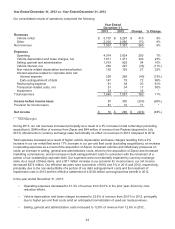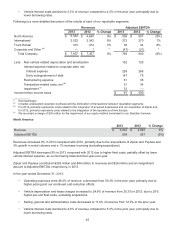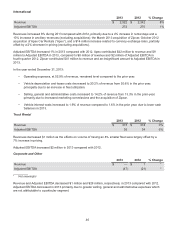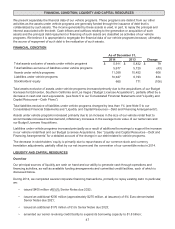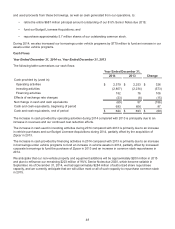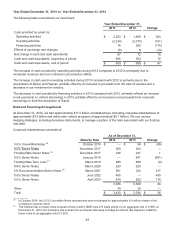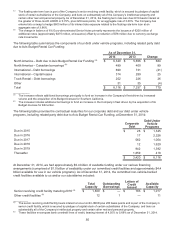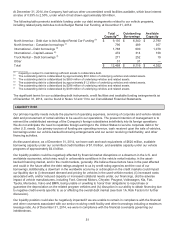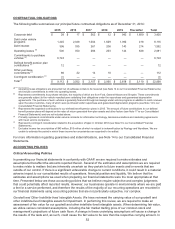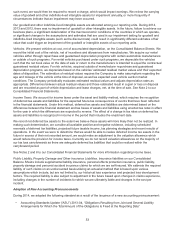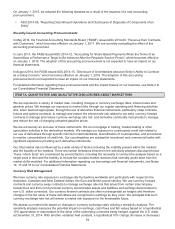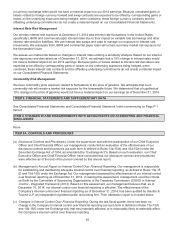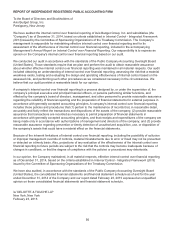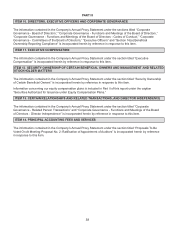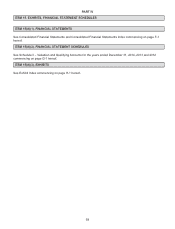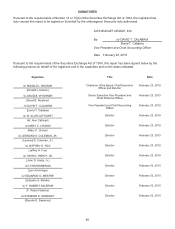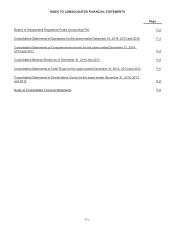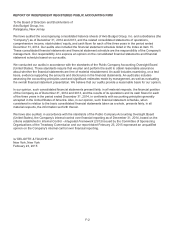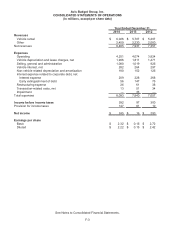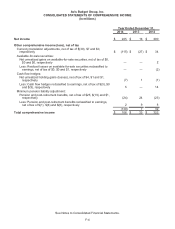Avis 2014 Annual Report Download - page 61
Download and view the complete annual report
Please find page 61 of the 2014 Avis annual report below. You can navigate through the pages in the report by either clicking on the pages listed below, or by using the keyword search tool below to find specific information within the annual report.
54
On January 1, 2015, we adopted the following standard as a result of the issuance of a new accounting
pronouncement:
• ASU 2014-08, “Reporting Discontinued Operations and Disclosures of Disposals of Components of an
Entity”
Recently Issued Accounting Pronouncements
In May 2014, the Financial Accounting Standards Board (“FASB”) issued ASU 2014-09, “Revenue from Contracts
with Customers,” which becomes effective on January 1, 2017. We are currently evaluating the effect of this
accounting pronouncement.
In June 2014, the FASB issued ASU 2014-12, “Accounting for Share-Based Payments When the Terms of an
Award Allow a Performance Target to Be Achieved After the Requisite Service Period,” which becomes effective
on January 1, 2016. The adoption of this accounting pronouncement is not expected to have an impact on our
financial statements.
In August 2014, the FASB issued ASU 2014-15, “Disclosure of Uncertainties about an Entity’s Ability to Continue
as a Going Concern,” which becomes effective on January 1, 2016. The adoption of this accounting
pronouncement is not expected to have an impact on our financial statements.
For detailed information regarding these pronouncements and the impact thereof on our business, see Note 2 to
our Consolidated Financial Statements.
ITEM 7A. QUANTITATIVE AND QUALITATIVE DISCLOSURES ABOUT MARKET RISK
We are exposed to a variety of market risks, including changes in currency exchange rates, interest rates and
gasoline prices. We manage our exposure to market risks through our regular operating and financing activities
and, when deemed appropriate, through the use of derivative financial instruments, particularly swap contracts,
futures and options contracts, to manage and reduce the interest rate risk related to our debt; currency forward
contracts to manage and reduce currency exchange rate risk; and derivative commodity instruments to manage
and reduce the risk of changing unleaded gasoline prices.
We are exclusively an end user of these instruments. We do not engage in trading, market-making or other
speculative activities in the derivatives markets. We manage our exposure to counterparty credit risk related to
our use of derivatives through specific minimum credit standards, diversification of counterparties, and procedures
to monitor concentrations of credit risk. Our counterparties are substantial investment and commercial banks with
significant experience providing such derivative instruments.
Our total market risk is influenced by a wide variety of factors including the volatility present within the markets
and the liquidity of the markets. There are certain limitations inherent in the sensitivity analyses discussed below.
These “shock tests” are constrained by several factors, including the necessity to conduct the analysis based on a
single point in time and the inability to include the complex market reactions that normally would arise from the
market shifts modeled. For additional information regarding our borrowings and financial instruments, see Notes
12, 13 and 18 to our Consolidated Financial Statements.
Currency Risk Management
We have currency rate exposure to exchange rate fluctuations worldwide and particularly with respect to the
Australian, Canadian and New Zealand dollars, the Euro and British pound sterling. We use currency forward
contracts and currency swap contracts to manage exchange rate risk that arises from certain intercompany
transactions and from non-functional currency denominated assets and liabilities and earnings denominated in
non-U.S. dollar currencies. Our currency forward contracts are often not designated as hedges and therefore
changes in the fair value of these derivatives are recognized in earnings as they occur. We anticipate that such
currency exchange rate risk will remain a market risk exposure for the foreseeable future.
We assess our market risk based on changes in currency exchange rates utilizing a sensitivity analysis. The
sensitivity analysis measures the potential impact on earnings, cash flows and fair values based on a hypothetical
10% appreciation or depreciation in the value of the underlying currencies being hedged, against the U.S. dollar
at December 31, 2014. With all other variables held constant, a hypothetical 10% change (increase or decrease)


